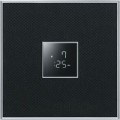Number of channels
The maximum number of audio channels that the audio system can reproduce through its own acoustics.
—
1.0. One channel of audio allows only monophonic sound — enough to hear the sound, but not providing a surround effect. The advantage of this option is compactness, because For normal operation, it is enough to equip the device with one speaker. The single-channel format is found mainly in inexpensive models, as well as in the most compact audio systems, where small size is more important than "fancy" sound.
—
2.0. Two channels is the minimum required to play stereo sound. This format already allows you to achieve a sense of spaciousness without requiring too many speakers and complicating the entire system. Therefore, he is very popular.
—
2.1. Modification of the 2.0 format described above,
supplemented by a subwoofer — a specialized speaker for low frequencies. The use of a subwoofer improves sound quality by delivering rich bass sound.
—
2.2. A further extension of the 2.1 format described above, providing for the presence of two subwoofers — this improves the reliability of the transmission of low frequencies.
— 3.1. An extended version of the 2.1 standard, in which two classic stereo speakers are complemented not only by a subwoofer, but also by a thi
...rd, centre speaker. This allows you to improve the sound quality — in particular, due to a richer surround sound.
Note that 2.0 models that do not have their own subwoofer may be equipped with a subwoofer output (see below).System power
The total sound power provided by the audio system at maximum volume, in other words, the total power of all the speakers provided by the device (including the subwoofer).
The higher the power, the louder the system will sound and the larger the area it can cover. On the other hand,
high power significantly affects the price, dimensions, weight and power consumption of the device. In addition, when evaluating and comparing according to this indicator, it is worth considering some nuances. Firstly, some manufacturers go to the trick and give in the characteristics not the average, but the peak sound power; such numbers can be quite impressive, but they have very little to do with real loudness. So if it seems to you that the claimed power is too high, it's ok to clarify what exactly is meant in this case. Secondly, when comparing, it is worth considering the presence of a subwoofer — it plays an auxiliary role, but it can account for more than half of the total system power. Because of this, for equal total power, a device with a subwoofer may be quieter than a model without a subwoofer: for example, a 2.0 40W system will have 20W per main channel, while a 2.1 40W model may have 20W per subwoofer, and only 10 watts for the main speakers.
Power per channel
Nominal sound power (see "System power") on each of the main channels of the audio system. This indicator is most often indicated in models with a subwoofer (see "Number of channels"); knowing it, you can estimate the power distribution between the main speakers and the subwoofer.
Phase inverter
The phase inverter is a tube installed in the column housing and having an outlet to the surrounding space. The length of the tube is chosen so that a signal comes out of the outlet, inverted in phase relative to the signal from the front of the diffuser. This enhances the sound pressure and improves the sound of the speakers, including at low frequencies. Note that such audio systems should be placed at a certain distance from walls, furniture, etc. — otherwise, a hum may occur due to the movement of air through the phase inverter tube.
A similar function in some models is performed by a passive radiator (see below).

